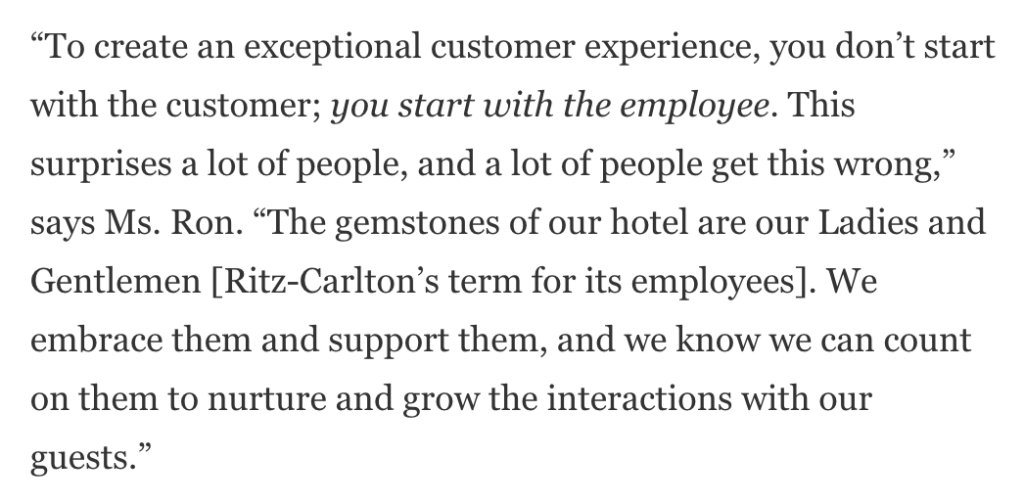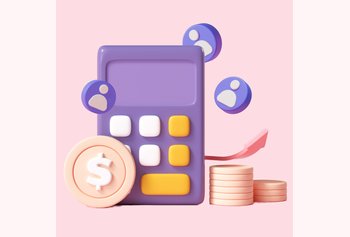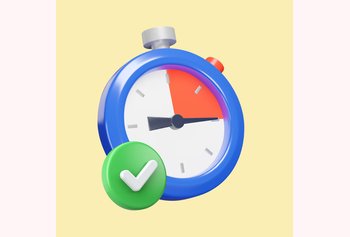What is Customer Obsession And Why Your Business Needs It?

Table of contents
Does customer obsession mean thinking about your customers 24/7? No!
It’s basically a mindset where you place the customer at the front and center of everything your business does. It’s about knowing your customers well enough to anticipate their needs and ensuring every interaction makes them feel valued.
So, how do you cultivate this mindset across your organization? How do you ensure that everyone in your company—from frontline staff to C-level employees—becomes customer-obsessed?
Let’s find out!
Table of Contents
- What is customer obsession?
- How is customer obsession different from customer-centricity?
- Why is customer obsession important?
- 5 ways to build a customer-obsessed culture
- Some more examples of customer-obsessed companies
- Become customer-obsessed with support tools like Hiver
What is customer obsession?
Customer obsession is more than a buzzword. It’s a business philosophy in which your customers’ needs and experiences drive every business decision and process.
In other words, a customer-obsessed company prioritizes what will benefit the customer most over the easiest thing to do. To implement this philosophy, every department in the company—from customer support to finance to product—has to work towards improving the customer experience directly or indirectly. For instance, the finance team can simplify the process for customers to make payments, and the product team can build an easy-to-use interface.
Amazon is a great example of customer obsession.
From its seamless one-click ordering system to fast delivery and personalized recommendations, Amazon’s service is designed with the customer in mind. It doesn’t just stop at providing a convenient shopping experience—it constantly innovates based on customer feedback and data.
For instance, Amazon Prime was created to meet customer demands for faster shipping.
Initiatives like this show that the company is listening to customers and actioning feedback.
How is customer obsession different from customer-centricity?
While customer-centricity and customer obsession may sound similar, there’s a critical distinction.
In a customer-centric approach, the customer is important, and their satisfaction is a priority.
However, it coexists with other business goals, such as profit marginsand operational efficiency. Simply put, companies focus on meeting customer needs but balance them with their internal goals.
Customer obsession, on the other hand, goes a step further. Under this mindset, the customer isn’t just important—their needs and expectations driveevery business decision and action, even if it means sacrificing short-term gains or making changes that are difficult but necessary for customer satisfaction. It’s about relentlessly focusing on what’s best for the customer in order to win their trust.
Let’s compare two companies: Netflix and a traditional cable provider.
Traditional cable providers often offer bundled packages that may not align with individual customer preferences. This one-size-fits-all approach can lead to dissatisfaction as customers pay for channels they don’t watch or need.
On the other hand, Netflix utilizes advanced algorithms to tailor content recommendations to individual users. This personalization is based on viewing history, preferences, and behavior, ensuring users feel understood and valued. For example, when you log in, Netflix immediately presents shows and movies aligned with your tastes, enhancing user engagement and satisfaction.
Why is customer obsession important?
Companies that have adopted a customer-obsessed approach report two times higher revenue growth, two times higher profitability growth, and two times higher customer retention. Here are some more reasons why customer obsession is important.
1. Improved customer retention and loyalty
When customers feel prioritized and experience consistently outstanding service, they remain loyal. For example, Apple has built a fiercely loyal customer base by focusing on intuitive design, reliable products, and personalized support. Apple’s Genius Bar offers hands-on customer assistance.
Visitors to the Genius Bar typically do not wait more than one to two minutes before being greeted by a staff member. This quick response time is crucial in enhancing customer satisfaction and reducing frustration associated with long wait times.
2. Competitive advantage
In crowded markets, customer obsession sets businesses apart. Take Starbucks, for instance. While coffee shops are everywhere, Starbucks stands out by delivering more than just coffee—it creates an experience.
From personalized drink orders to a cozy atmosphere, the company focuses on every detail to make customers feel valued. This level of attention differentiates Starbucks from other competitors, allowing it to charge premium prices while retaining customers’ loyalty.
3. Word of mouth and brand advocacy
Companies known for being customer-obsessed naturally generate positive word of mouth. Zappos is a prime example.
Their famous “customer service above all” approach has led to numerous stories of exceptional support, like paying for expedited shipping out of their pocket or extending return windows well beyond the norm. These efforts encourage customers to recommend the brand to their friends and family, driving organic referrals and fostering a strong, positive brand image.
4. Revenue growth
Companies that prioritize customer obsession often see significant revenue growth. Amazon is a standout example.
For instance, Amazon Prime members spend seven times more than non-Prime customers, demonstrating how a commitment to customer satisfaction can directly impact revenue. Their obsession on making things easy and keeping customers happy has led to more repeat customers and sustainable growth over the years.
5 ways to build a customer-obsessed culture
As I mentioned earlier, customer obsession is not a strategy but a mindset. So, to be customer-obsessed, you have to think like one. You have to put yourself in their shoes and then walk the walk to understand how to provide them value in every interaction. Here’s how you can start:-
1. Empower your support team to go the extra mile:
Despite the rapid advancement of AI in customer support, 52% of support professionals note that their customers prefer human-only interactions. This highlights the enduring value of empathy and human connection in customer service.
So, how do you equip your team in the best possible way for customer interactions daily? Here’s what you can do to ensure that:
- It all starts with the quality of training you provide. Use role-playing scenarios to practice handling different customer interactions. This would prepare your support staff for customers of all kinds – from the unreasonable ones to the frustrated ones.
- Give your support staff some level of autonomy. Let them make decisions without needing managerial approval all the time. This ensures that your support team is able to go the extra mile and think on its feet. Ritz-Carlton, for example. allows employees to spend up to $2,000 to resolve customer issues without managerial approval.
- Give a shout-out to support staff who excel at their jobs. You could hold a monthly huddle with your team to celebrate top performers. This would improve team morale and show that good work gets rewarded.
Recommended Reading: The Ultimate Customer Service Hiring and Training Handbook
2. Track customer-centric KPIs
I was listening to a Joe Rogan podcast where the guest said,’‘ If I don’t see it in the numbers, I don’t see it happening.” That stuck with me because it’s true for all aspects of life, including customer obsession.
If you’re trying to optimize your customer experience or customer support strategy based on assumptions, you’re probably shooting in the dark.
But what KPIs should you track? Here’s what you can do to get started:-
- Measure customer satisfaction: KPIs like Net Promoter Score (NPS),Customer Satisfaction Score (CSAT), and Customer Effort Score (CES) can give you direct feedback on how satisfied customers are with your services or products. This helps identify areas of improvement in the customer journey.
- Track customer retention: Monitoring metrics like churn rate and customer lifetime value (CLV) can help can help you identify reasons why customers leave your company and take proactive steps to improve retention.
- Gauge service quality: Metrics such as first response time and average resolution time help assess the efficiency of customer support teams. But how do you know if your support team responds to and resolves every query on time? That’s why you need to set up SLAs. SLAs are nothing but expectations that a company sets with its customers for service quality. For instance, you can set an SLA that says all customer queries will be responded to within 5 working hours. This way, there’s a lot more accountability across your team.
For example, let’s say you notice a decline in your CSAT. Upon further probing, you will find out that customers aren’t happy with the speed of service.
One way you can act on this feedback is by introducing a chatbot to handle commonly asked customer queries.
3. Get direct feedback from customers
No one can tell you more about your customers’ problems than the customers themselves. That’s why active listening and empathy are critical soft skills for customer service pros to cultivate.
Think about it: If a software company receives feedback from users about certain features being difficult to use, it can immediately work on simplifying the user interface or adding tutorials. This resolves the issue and demonstrates that the company listens and adapts based on their needs, exemplifying a customer-obsessed culture.
Here’s how you can get started:-
- Surveys are among the most common and effective tools for collecting customer feedback. They can be tailored to specific objectives, such as measuring customer satisfaction (CSAT),loyalty (NPS),or ease of use (CES). Surveys can be distributed via email, embedded on websites, or conducted in-app.
- Embedding feedback forms on your website allows visitors to share their thoughts without interrupting their browsing experience. These forms can be simple one-question surveys or more detailed questionnaires.
- Conducting direct interviews with customers provides deep insights into their experiences and preferences. This qualitative method allows for open-ended discussions that uncover underlying issues and opportunities for improvement.
Recommended Reading:Listening, Understanding, Acting: A Blueprint for Customer Satisfaction
4. Personalize customer interactions
Personalization is one aspect that is still underestimated. It may look like a small thing, but it makes a lot of difference to your customers. In fact, 76% of customers get frustrated when they don’t receive personalized experiences, indicating the negative impact of generic service.
That’s because a simple, “Hey John, I see you recently bought XYZ sneakers. How are you finding them?” is way better than, “Hello, how can I help you today?”
So, how do you truly personalize the customer experience? Here’s what you can do for starters:-
- Utilize customer data: Leverage analytics to understand customer preferences, behaviors, and purchasing patterns. This information can help you tailor interactions and marketing efforts. For instance, you could notify a customer that a product he was checking before is available at a discount.
- Voice Interfaces: Use voice-assisted technology for personalized interactions, allowing customers to receive tailored information through voice commands. Amazon’s Alexa and Google Home are perfect examples of this.
- Chatbots and AI Assistants: Implement AI to provide personalized responses based on user queries and past interactions.
For example, Myntra’s My Stylist feature acts as a personal fashion advisor, recommending outfits based on users’ purchase history and preferences. It can even analyze images from a user’s wardrobe to suggest complementary items.
5. Create a valuable loyalty program
Most loyalty programs focus on rewarding customers just for spending money, like points for purchases or discounts on future buys. But to become truly customer-obsessed, you should think beyond just transactions and offer rewards for other meaningful interactions.
This could include things like leaving product reviews, engaging with the brand on social media, or referring friends.
For example, take Sephora’s Beauty Insider program. They don’t just reward customers for how much they spend; they also offer perks for writing product reviews, sharing beauty tips, and attending exclusive events. Plus, they provide personalized rewards, like birthday gifts or product samples based on a customer’s purchase history. This makes the customer feel valued for more than just their purchases, deepening their connection with the brand.
Here’s how you can try to create genuine value for your customers beyond just offering discounts:
- Understand your customers’ needs: The first step is knowing what your customers value. Gather insights through surveys, feedback, and customer behavior data. For example, some customers may prefer exclusive access to products, while others might value free shipping or personalized experiences.
- Personalize the experience: I know we have talked about this before but it makes sense to mention it again. A loyalty program feels much more valuable when the rewards are tailored to the individual, making customers feel recognized and appreciated. This involves mapping the customer journey from start to finish and identifying touchpoints where you can add value. For example, Sephora’s Beauty Insider program offers customized product samples based on a customer’s beauty profile and purchase history.
- Create a Community: Develop a sense of belonging by fostering a community around your loyalty program. Customers who feel part of a community are more likely to stay loyal. You can offer exclusive content, member-only events, or forums where customers can share experiences. For example, Harley-Davidson’s HOG (Harley Owners Group) not only offers discounts and rewards but also connects motorcycle enthusiasts through exclusive events and a shared community spirit.
- Make the Program Easy to Use: This may seem obvious but is often overlooked. Ensure that your loyalty program is simple, intuitive, and easy to access. Avoid complex point systems or difficult redemption processes that frustrate customers. The simpler the experience, the more likely customers are to engage regularly. For example, Dunkin’ Donuts’ DD Perks program allows customers to quickly earn points and redeem rewards directly through their mobile app, streamlining the experience.
Some more examples of customer-obsessed companies
1. Ritz-Carlton
The Ritz-Carlton empowers its employees with a $2,000 “empowerment fund” per employee daily to resolve guest issues without needing managerial approval, fostering a culture of service excellence.
2. Apple
Apple’s customer obsession extends to creating a tightly integrated ecosystem of products and services that work seamlessly together, enhancing the overall user experience. Apple’s ecosystem—comprising the iPhone, iPad, Mac, Apple Watch, and services like iCloud, Apple Music, and more—ensures that customers can switch between devices effortlessly. Features like Handoff and Continuity allow users to start a task on one Apple device and finish it on another, offering a frictionless experience across the ecosystem. This seamless integration encourages customers to stay within the Apple universe, making their experience feel cohesive and unified.
3. Netflix
Netflix leverages data analytics to personalize content recommendations, ensuring users receive tailored viewing suggestions, significantly enhancing user engagement and satisfaction.
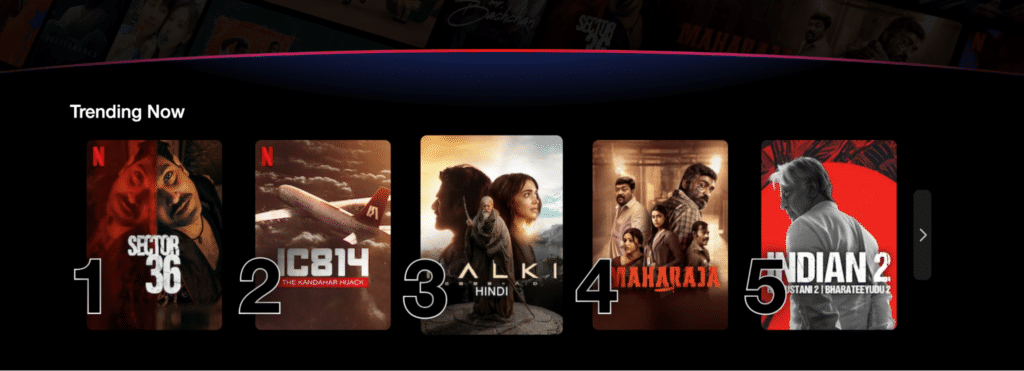
4. Starbucks
Starbucks creates a community atmosphere in its stores, encouraging customers to connect with baristas, and customize their drinks. This fosters a sense of ownership and loyalty.
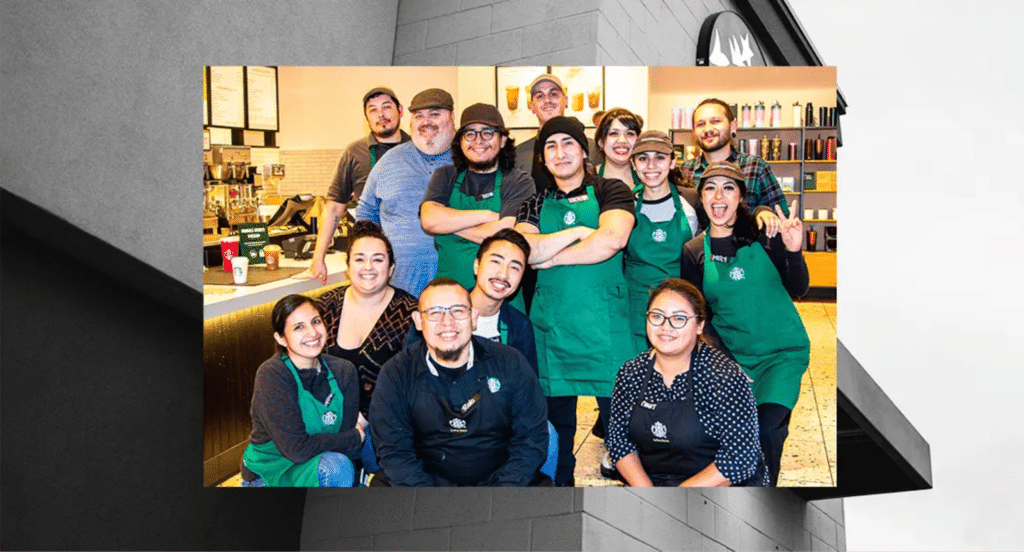
5. Tesla
Tesla’s direct-to-consumer sales model eliminates intermediaries, allowing for a more personalized buying experience, while software updates and features are continuously improved based on customer feedback.
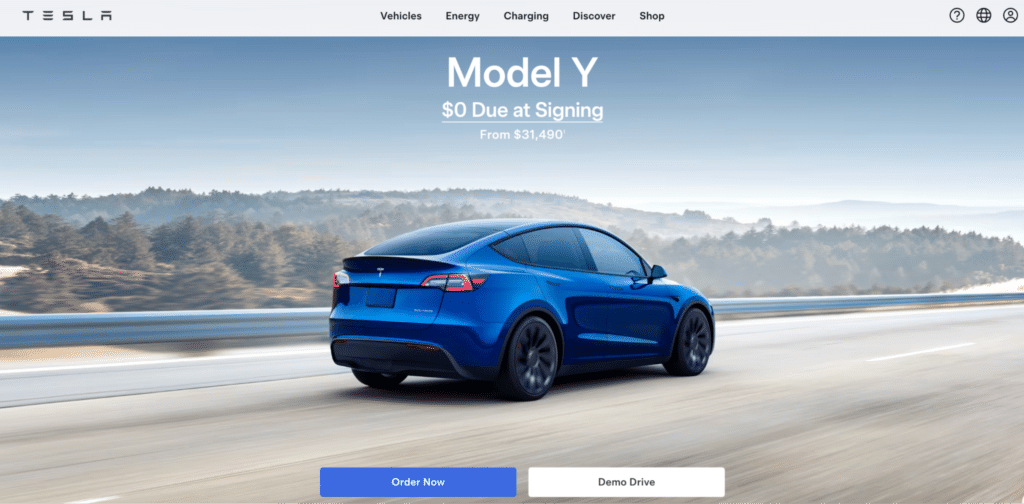
6. Salesforce
Salesforce emphasizes empowering customers to help themselves and each other. Through the Trailblazer Community, Salesforce users can engage in peer-to-peer support, learning, and networking, creating a highly collaborative environment that puts the customer at the center of the company’s ecosystem. This is also a very thoughtful move by Salesforce, given the complexity of the product. By enabling customers to help each other, Salesforce creates an environment of continuous learning and problem-solving, which makes the platform easier to navigate.

Moreover, the Trailblazer Community provides a space for users to network, share success stories, and even influence product development through feedback. This level of involvement empowers customers and reinforces Salesforce’s customer-obsessed culture. When customers feel heard and can actively contribute to improving the product, it builds loyalty and trust.
Become customer-obsessed with support tools like Hiver
Let’s recap the actionables that can help you become customer-obsessed. They include:-
- Empowering your support team to go the extra mile
- Tracking customer-centric KPIs
- Getting direct feedback from customers
- Creating a valuable loyalty program
However, becoming customer-obsessed doesn’t mean you need to completely overhaul your business overnight. Start small by implementing actionable steps, such as gathering feedback, optimizing touchpoints, and investing in your customer support capabilities.
And if you’re ready to become customer-obsessed, you can leverage tools like Hiver to better support your customers and anticipate their needs in advance. Take this tour to learn how.











